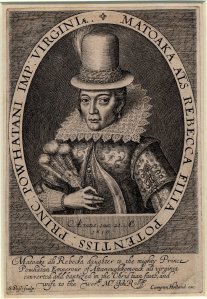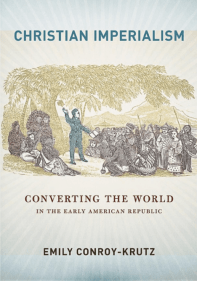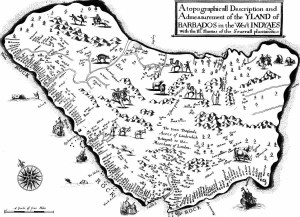 Following up yesterday’s review by Lindsay Keiter, today The Junto interviews James Parisot, author of How America Became Capitalist: Imperial Expansion and the Conquest of the West (Pluto, 2019). James teaches in the Department of Sociology at Drexel University, and received his PhD at SUNY Binghamton, home of the Fernand Braudel Center for the Study of Economies, Historical Systems, and Civilizations. Continue reading
Following up yesterday’s review by Lindsay Keiter, today The Junto interviews James Parisot, author of How America Became Capitalist: Imperial Expansion and the Conquest of the West (Pluto, 2019). James teaches in the Department of Sociology at Drexel University, and received his PhD at SUNY Binghamton, home of the Fernand Braudel Center for the Study of Economies, Historical Systems, and Civilizations. Continue reading
Tag Archives: imperialism
Q&A with L.H. Roper
Today at The Junto, L.H. Roper, professor of history at the State University of New York at New Paltz and coeditor in chief of the Journal of Early American History, joins us to discuss his new book, Advancing Empire: English Interest in Overseas Expansion, 1613-1688. In the book, Roper explores the role of private interest in the establishment of a global English empire during the seventeenth century. With chapters that span America, Africa, and Asia, Roper’s work challenges us to think more critically about state versus individual initiative and emphasizes continuity across a wide geographic scope. The book came out last year and has received attention and praise in several notable reviews, which can be found here, here, and here. Continue reading
Guest Post: Did Squanto meet Pocahontas, and What Might they have Discussed?
This is a guest post by Dr E. M. Rose. Dr Rose is a Visiting Fellow, Department of History, Harvard University, and can be reached at emrose@fas.harvard.edu. These observations emerged during research Rose conducted in the spring of 2017 as Visiting Fellow at The Omohundro Institute of Early American History and Culture (OIEAHC)/Jamestown Rediscovery Foundation at Historic Jamestowne.

Two of the most famous Native Americans in early colonial history may well have met in London. Matoaka, nicknamed Pocahontas, who lived near the Jamestown settlement in Virginia and Tisquantum, better known as Squanto, who greeted the Pilgrims in Plymouth, Massachusetts, were apparently living near other in the English capital in late 1616. Pocahontas and Squanto were both part of a small and complexly entwined commercial community of merchants, sea captains, and maritime entrepreneurs, whose ventures spanned the globe. The two Native Americans were kidnapped in America within a year of each other and eventually came to England, where they were welcomed enthusiastically.[1] Although there is, as yet, no documentation to prove that such a meeting took place, circumstantial evidence suggests that they met when they were staying only a few hundred yards down the street from each other in the homes of men with interlocking business interests. Although the histories of Jamestown and Plymouth are usually treated as separate chapters in most narratives of American history, they were closely linked. Continue reading
Review: Emily Conroy-Krutz, Christian Imperialism: Converting the World in the Early American Republic
Emily Conroy-Krutz, Christian Imperialism: Converting the World in the Early American Republic (Ithaca: Cornell University Press, 2015)

In February 1812, eight American missionaries—five ordained clergymen and three of their wives—set sail for India as representatives of the recently established American Board of Commissioners for Foreign Missions (ABCFM). Though the specifics of their mission were ill defined, and none of the eight lasted long in India, their mission marked the propitious beginnings of the foreign mission movement in America. Over the course of the next four decades, more than one thousand men and women were commissioned by the ABCFM to missionize non-Christian peoples far beyond the borders of the early American republic. In Christian Imperialism, Emily Conroy-Krutz analyzes the experiences of the ABCFM missionaries from roughly 1812 to 1848. She argues, as the title of her book implies, that the missionaries were agents of “Christian Imperialism,” a vision and effort to convert (and civilize) “heathen” peoples around the globe that variously worked in concert with and in contest against other forms of early American imperialism. Continue reading
Big History: Weighing the Benefits and Drawbacks of a Comparative Project
Casey Schmitt is a PhD candidate in History at the College of William & Mary, where she is writing a dissertation on the Iberian roots of seventeenth-century Anglo-American slave law. This is her second guest post, following her first on the value of storytelling and the use of audiobook primary sources in the classroom here.
 A little over a year ago, I switched research interests from the study of eighteenth-century contraband trade between Jamaica and Cartagena de Indias to a comparative study of the codification of slave law in the greater Caribbean. Admittedly not too drastic of a change, I was nonetheless daunted by moving from a historiography containing a select number of significant works to a field where innumerable scholars have dedicated entire careers. Like any graduate student, I began working through the library stacks here at the College of William and Mary, seeking answers to what I thought would be easy questions: Were the legal regimes of European slave societies shaped by their interactions with other slave societies in the Caribbean? Were English slaveholding practices modeled off of successful Portuguese or Spanish examples? Why were there so many institutionalized efforts to codify slave law in the seventeenth century and did these separate legal dialogues unfold in conversation with one another? As you can probably guess, none of these questions have proven as easy to answer as I thought. Continue reading
A little over a year ago, I switched research interests from the study of eighteenth-century contraband trade between Jamaica and Cartagena de Indias to a comparative study of the codification of slave law in the greater Caribbean. Admittedly not too drastic of a change, I was nonetheless daunted by moving from a historiography containing a select number of significant works to a field where innumerable scholars have dedicated entire careers. Like any graduate student, I began working through the library stacks here at the College of William and Mary, seeking answers to what I thought would be easy questions: Were the legal regimes of European slave societies shaped by their interactions with other slave societies in the Caribbean? Were English slaveholding practices modeled off of successful Portuguese or Spanish examples? Why were there so many institutionalized efforts to codify slave law in the seventeenth century and did these separate legal dialogues unfold in conversation with one another? As you can probably guess, none of these questions have proven as easy to answer as I thought. Continue reading
The Trouble with Global: Early Thoughts from an Early Americanist
 This week, I’m wrapping up my survey course on modern global history (1500 to the present). It’s the first time I’ve taught this course. So I have opinions.
This week, I’m wrapping up my survey course on modern global history (1500 to the present). It’s the first time I’ve taught this course. So I have opinions.
Let me just put this right out there: I had long been skeptical about global history as a standard survey course. It seemed too unwieldy, too shallow or spotty in coverage, and way too vulnerable to political ax-grinding. I assumed this course would reinforce old stereotypes: that history is an endless parade of random facts and dates and battles and names of elite men. Or else it would turn into pure theory, and thus an exercise in polemic. Either way, it would have little of the texture of lived experience, which is what I reckon makes history compelling to ordinary powerless students.
To See The World In A Bale of Cotton
 The promise of a tie between the local and the global—a thread to join the dense fiber of individual life to the vast patterns of human interaction—has long lingered at the edge of the historian’s vision. “The hours should be instructed by the ages, and the ages explained by the hours,” wrote Emerson in “History.” “Each new fact in . . . private experience flashes a light on what great bodies of men have done.” Even the less Transcendental among us are lured by a link between the intimate and the infinite: every globalist, no matter how ambitious, must find their ground-level characters and illustrative anecdotes; the best microhistorians train their lenses to reveal not just cell particles but a whole cosmos. Few recent works in early American history, however, are so explicit in their equal pursuit of the local and the global, the hours and the ages, as Walter Johnson’s River of Dark Dreams (Cambridge: Belknap Press of Harvard University Press, 2013). Continue reading
The promise of a tie between the local and the global—a thread to join the dense fiber of individual life to the vast patterns of human interaction—has long lingered at the edge of the historian’s vision. “The hours should be instructed by the ages, and the ages explained by the hours,” wrote Emerson in “History.” “Each new fact in . . . private experience flashes a light on what great bodies of men have done.” Even the less Transcendental among us are lured by a link between the intimate and the infinite: every globalist, no matter how ambitious, must find their ground-level characters and illustrative anecdotes; the best microhistorians train their lenses to reveal not just cell particles but a whole cosmos. Few recent works in early American history, however, are so explicit in their equal pursuit of the local and the global, the hours and the ages, as Walter Johnson’s River of Dark Dreams (Cambridge: Belknap Press of Harvard University Press, 2013). Continue reading
Walter Johnson’s “River of Dark Dreams”

Walter Johnson’s River of Dark Dreams is a meditation on the making of the Cotton Kingdom in the nineteenth century American South. The book is rich with the intimacies and delicacies of detail—details that describe the fundamental material circumstances in which enslaved men, women, and children forcibly transformed Native America into cultivated grids of mono-crop culture at the behest of “Manifest Destiny”; details that are gut-wrenching in their vivid depictions of the social relations of white supremacy—the torture, the hunger, the bleeding, and the raping of the enslaved—the malignant, violent underbelly that made and forcibly maintained the Cotton Kingdom; details that connect the smallest common denominators of plantation life, whether measured in lashes (upon flesh), or pounds (of cotton), or any other metric of rule—to the global economy, which itself connected slaveholders and merchant capitalists from the fields and riverbanks of New Orleans to the factories of Manchester and Liverpool. Continue reading
